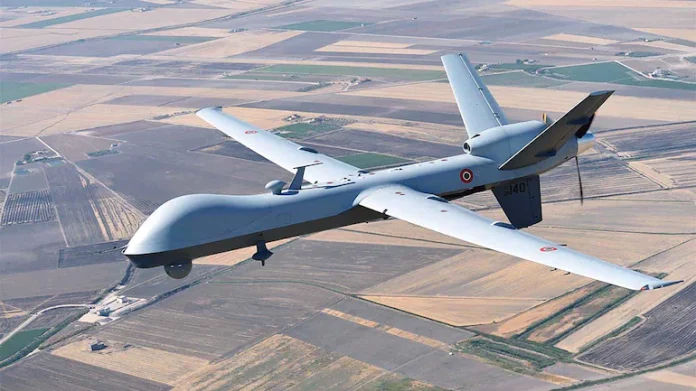The Government of India is promoting “Make in India” for self-reliance in the defence sector, which is evident in the several initiatives it has taken that favour potential Indian vendors in terms of indigenisation and technology development. The intention is to encourage Indian firms to design, develop and manufacture defence equipment at the system, subsystem and component levels, with indigenisation and self-reliance as primary focal areas.
By A. Karunakaran
In the early 1960s, DRDO and several Defence Public Sector Undertakings (DPSUs) like Hindustan Aeronautics Limited (HAL), Mazagon Dock Shipbuilders Limited (MDL), Garden Reach Shipbuilders & Engineers Limited (GRSE), Goa Shipyard Limited (GSL), Hindustan Shipyard Limited (HSL), Bharat Dynamics Limited (BDL), BEML Ltd, Mishra Dhatu Nigam (MIDHANI) and Bharat Electronics Limited (BEL) including Ordnance Factory Board (OFB) initiated defence production and over a period of time provided tremendous support to our Armed Forces. However, there has always been a gap between the demand and supply of equipment to the defence forces and therefore, till date the tri-services resort to importing critical equipment to meet their operational requirements. Noticeably, policies like ‘Make in India’ and ‘Aatmanirbhar Bharat’ are aimed at minimising imports by creating a robust ecosystem for nurturing private industries and optimisation of DPSUs and Ordnance Board. At the same time, foreign companies are encouraged to set up design, development and manufacture of military equipment in India so as to boost Indian economy and for creating job opportunities in India.
Defence Procurement Manual, Defence Acquisition Procedure 2020 and Defence Production and Export Promotion Policy 2020 encourage innovation and indigenisation in private industries, and are aimed at creating a dynamic, robust and competitive industry base so as to reduce dependence on imports and for promoting exports. The financial assistance to academia for research and development and the recent declaration of celebrating 16 January as the ‘Start-Ups Day’ henceforth, shows the government’s seriousness towards rewarding innovation and indigenisation in start-ups. Further, Strategic Partnership Model has been proposed for Indian industries to collaborate with foreign OEMs (Original Equipment Manufacturers) and to seek Transfer of Technology to build the capability to develop and manufacture equipment in India. Additionally, there are other initiatives like setting up Defence Corridors across states, conduct of defence exhibitions, seminars by autonomous bodies like Confederation of Indian Industry, Federation of Indian Chambers of Commerce and Industry, etc., and tri-services interactive forums with industries. Programmes like Innovation Defence Excellence (iDEX), Technology Development Fund (TDF), Defence India Start-Up Challenges (DISC) and In-services Innovation Contests with financial back-ups also look promising.
Despite the fact that the defence sector offers an ocean of opportunities for industries and favourable policies are being framed by the Government of India, ongoing global technological advancements in the areas like Artificial Intelligence, Machine Learning, Big Data analysis and mining, solar energy, advanced battery developments, Nano Technology, robotics, formulation of next-generation aviation traffic management systems, etc., could pose aviation challenges in the future.
Considering the government’s push for indigenisation in a period of technological disruptions in the defence arena, a need has been felt for conducting research in one of the key specialty defence areas, namely Unmanned Aircraft Systems (UAS). The aim of the research is to understand the impact of government initiatives on Indian industries concerning UAS under these dynamic conditions. Further, the research also aims to understand India’s Strategic Military balance in UAS sector compared to its potential neighbours China and Pakistan thereby seeing future roadmap of UAS in India.
Unmanned Aerial Machines are commonly denoted as Unmanned Aircraft/Aerial System (UAS), Unmanned Aerial Vehicle (UAV), Unmanned Combat Aerial Vehicle (UCAV), Remotely Piloted Aircraft (RPA), Remotely Piloted Vehicles (RPV), Loitering Munitions (LM) and Drones. The term UAS has been widely used since the system comprises UAV, Ground systems, Mission Control Stations and other supporting equipment. Irrespective of whether it is for civil or military use, the term UAV or Drones (a component of UAS and being airborne platform) is used by many authors as generic to represent UAS.
Analysts point out that India is at least a decade behind Pakistan and even further behind China in the UAV sector. The “iron brothers” Pakistan and China have been closely collaborating in the development of and acquisition of various military platforms and weapons, including combat drones. China had relied on UAVs and built a robust aviation programme right from the 1950s. Government support, reliable infrastructure, quality education, research and development have collectively helped China in this domain. Collaboration and joint ventures with other countries and clandestine operations also aided China in its objectives. Pakistan on the other side owes the development of its programme to the PSUs and support extended by China. The private sector also has a significant role to play. PSUs and more private industries focus on medium and small UAVs due to economic affordability, export value and low cost.
Considering the steady growth in the UAV sector across our neighbours, the government’s roadmap for robust aviation corridor and industries’ perspective on defence initiatives, a survey was carried out for Qualitative Analysis keeping into consideration the policies, industry capabilities and threat perception by our neighbours. The survey brought out insights that there is a possibility of immense growth for both civil and military UAVs/drones in future. The industries are inclined towards developing medium, small and mini UAVs including Swarm Drones. Economic feasibility, demand across commercial sectors, mass production, qualified manpower in-house with technology help from overseas suppliers, and increased global competitiveness could all be factors for venturing into the small UAVs sector.
Large UAVs, on the other hand, are not given priority for a variety of reasons, including high investment costs, customised specific purpose needs, research and development, the likelihood of a minimum order number, advanced technology, and the lack of a guarantee for fixed orders. Even industry believes that the policies are beneficial to a considerable extent, but that they need to be revised in a few areas. DRDO and DPSUs’ dependency for testing and lab facilities was also inferred. The industry has apprehension about involving academia and this is an important area to ponder upon.
While India is establishing a strong aviation ecosystem by bringing together all stakeholders, including the government, promotional bodies, DPSUs, tri-services, academia and industry partners, experts believe that in the next 10 to 15 years, private Indian industries will be the crusaders for the government in defence production, particularly in the UAV vertical. Correlation between industries and the economy will also be crucial in the future. The concerns and suggestions shared by the industries must be taken into account and researched in order to provide value to the expanding ecosystem. The insights derived from the research would bring out the industries’ perspective and may add value to government policies.
This article first appeared in www.idsa.in and it belongs to them.








